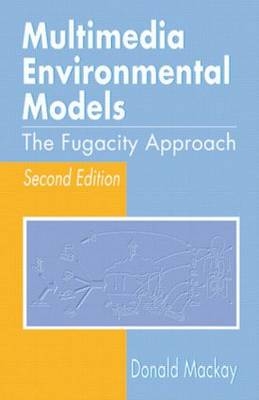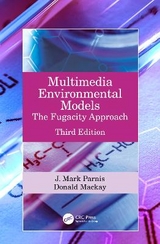
Multimedia Environmental Models
Lewis Publishers,U.S. (Verlag)
978-1-56670-542-4 (ISBN)
- Titel erscheint in neuer Auflage
- Artikel merken
Completely revised and updated, Multimedia Environmental Models: The Fugacity Approach, Second Edition continues to provide simple techniques for calculating how chemicals behave in the environment, where they accumulate, how long they persist, and how this leads to human exposure. The book develops, describes, and illustrates the framework and procedures for calculating the behavior of chemicals in our multimedia environment of air, water, soil, and sediments, as well as the diversity of biota that reside in these media.
While other books focus on specific compartments, such as the atmosphere, or specific substances, such as PCBs, this book presents the big picture of how organic chemicals behave in the total environment. It does this by providing examples of calculation methods based on the fugacity approach and explaining how to access up-to-date property databases and estimation methods as well as computer programs, which are available from the Internet. In addition, the models are Web based, instead of on a floppy disk as in the previous edition.
Building on the work developed in the First Edition, the Second Edition includes:
A how-to modeling section, more worked examples and problems- most with solutions and answers
Expanded treatment of structure-activity relationships and modern estimation methods
More material illustrating applications to bioaccumulation is specific organisms and food webs
Emphasis on current efforts to identify PBT chemicals and exposure analysis as a component of risk assessment
Examples that provide each step of modeling calculations
Web-based models, and references to property databases, estimation methods, and computer programs from the Internet
When you need to make assessments of chemical behavior you need current, comprehensive. Multimedia Environmental Models: The Fugacity Approach provides you with not only an understanding of how the multitude of organic chemicals behave in the total environment, but also with practical examples of how this behavior can be predicted using the fugacity approach.
INTRODUCTION
Introduction
Some Basic Concepts
Units
The Environment as Compartments
Mass Balances
Eulerian and Lagrangian Coordinate Systems
Steady-State and Equilibrium
Diffusive and Non-Diffusive Environmental Transport Processes
Residence Times and Persistence
Real and Evaluative Environments
Summary
Environmental Chemicals and Their Properties
Introduction and Data Sources
Identifying Priority Chemicals
Key Chemical Properties and Classes
The Nature of Environmental Media
Introduction
The Atmosphere
The Hydrosphere or Water
Bottom Sediments
Soils
Summary
Phase Equilibrium
Introduction
Properties of Pure Substances
Properties of Solutes in Solution
Partition Coefficients
Environmental Partition Coefficients and Z Values
Multimedia Partitioning Calculations
Level I Calculations
Advection and Reactions
Introduction
Advection
Degrading Reactions
Combined Advection and Reaction
Unsteady-State Calculations
The Nature of Environmental Reactions
Level II Computer Calculations
Summary
Intermedia Transport
Introduction
Diffusive and Nondiffusive Processes
Molecular Diffusion Within a Phase
Turbulent or Eddy Diffusion Within a Phase
Unsteady-State Diffusion
Diffusion in Porous Media
Diffusion Between Phases: The Two-Resistance Concept
Measuring Transport D Values
Combining Series and Parallel D Values
Level III Calculations
Unsteady-State Conditions (Level IV)
Applications of Fugacity Models
Introduction, Scope and Strategies
Level I, II and III Models
An Air-Water Exchange Model
A Surface Soil Model
A Sediment-Water Exchange Model
Qwasi Model of Chemical Fate in a Lake
Qwasi Model of Chemical Fate in Rivers
Qwasi Multi-Segment Models
A Fish Bioaccumulation Model
Sewage Treatment Plants
Indoor Air Models
Uptake by Plants
Pharmacokinetic Models
Human Exposure to Chemicals
The PBT-LRT Attributes
Global Models
Closure
| Erscheint lt. Verlag | 26.2.2001 |
|---|---|
| Zusatzinfo | 16 Tables, black and white |
| Verlagsort | London |
| Sprache | englisch |
| Maße | 156 x 235 mm |
| Gewicht | 562 g |
| Themenwelt | Naturwissenschaften ► Biologie ► Ökologie / Naturschutz |
| Technik ► Umwelttechnik / Biotechnologie | |
| ISBN-10 | 1-56670-542-8 / 1566705428 |
| ISBN-13 | 978-1-56670-542-4 / 9781566705424 |
| Zustand | Neuware |
| Informationen gemäß Produktsicherheitsverordnung (GPSR) | |
| Haben Sie eine Frage zum Produkt? |
aus dem Bereich



